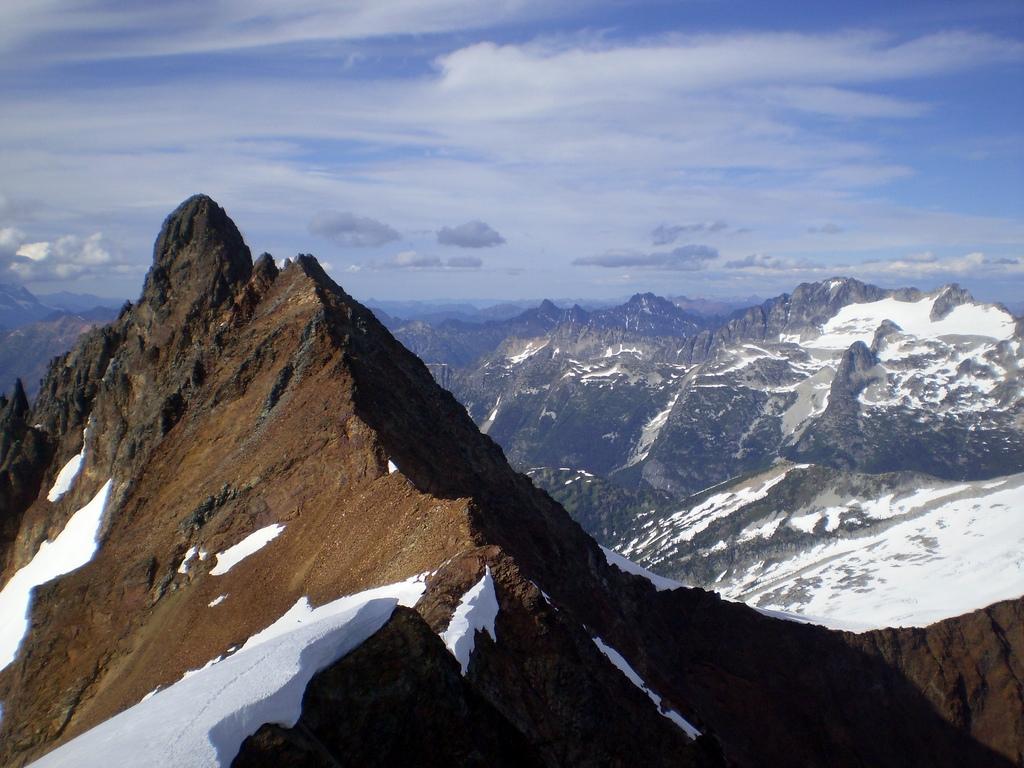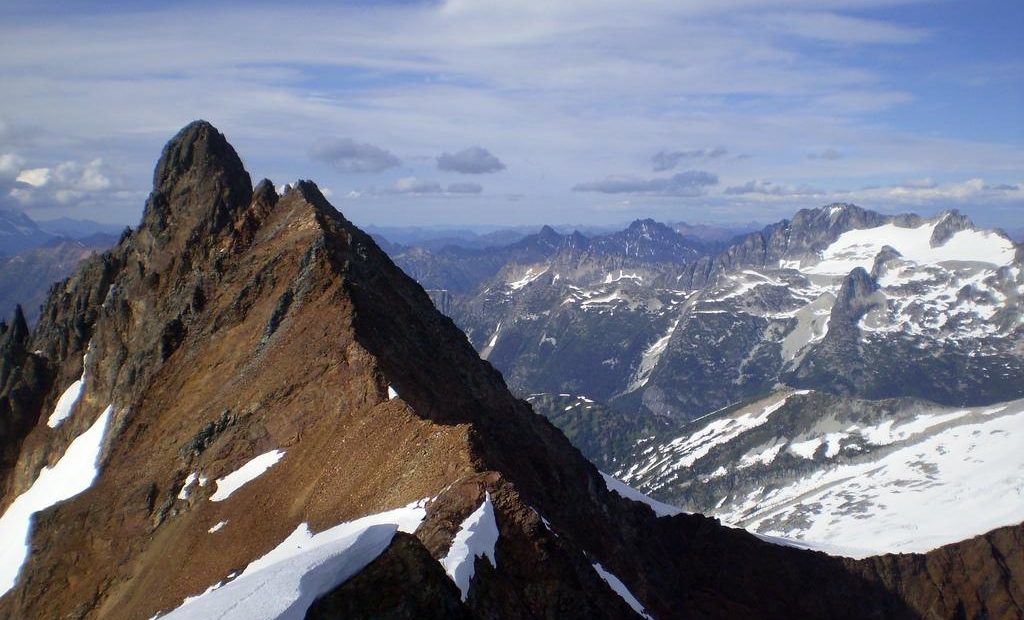
50 Years On, North Cascades National Park Envisions The Next 50
Listen
North Cascades National Park doesn’t officially turn 50 years old until next month, but the Park Service and its friends are celebrating the big five-oh from August to October.
First, visitors and staff reveled in “Cascades Karaoke” at the park visitor center, watched artists in residence and took in a history town hall. Also late last month, the American Wild Ensemble celebrated the park with a music hike and campground concerts. A mountain climber is currently trying to scale 50 peaks in the park for the 50th anniversary. And coming up, the park gets more love at an October 5-7 harvest festival in Stehekin and an October 14 party in Seattle.
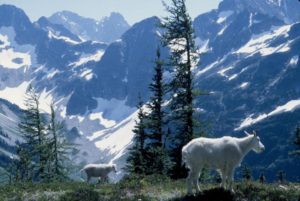
Mountain goats beside the Easy Pass trail in North Cascades National Park. CREDIT: NPS
This year, the three units of the North Cascades National Park complex could hit one million total visitors for the first time, although wildfire smoke in August may have kept enough tourists away to cause the tally to fall just short. The park does not charge an entrance fee, unlike other Northwest national parks such as Mount Rainier and Crater Lake.
But despite its popularity, few know that it took skillful political compromise in the 1960s to establish the new national park and the adjacent Ross Lake and Lake Chelan National Recreation Areas.
North Cascades National Park and Redwood National Park were both signed into being on the same day by President Lyndon Johnson on October 2, 1968, along with two other acts establishing wild and scenic rivers protection and a national trails system.
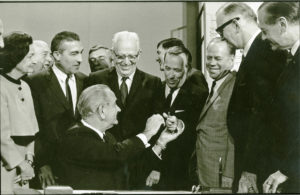
President Lyndon Johnson hands the pen he used to sign the North Cascades National Park Act to sponsor Sen. Henry “Scoop” Jackson. CREDIT: NORTH CASCADES PARK ARCHIVE
Today, there are two pieces of true national park, split by a national recreation area with three Seattle City Light dams, bracketed by another national recreation area, next to national forest wilderness and an international border.
Park history author Lauren Danner says activism in the 1950s and ’60s to establish a national park in the North Cascades “jump-started the modern environmental movement in the Pacific Northwest.”
“It is remarkable how little has changed,” Danner said in an interview, reflecting on the arguments around federal lands management. Then, as now, supporters of multiple use argued against “locking up” resources while outdoor enthusiasts waxed poetic about the value of untrammeled wilderness.
“We’re hearing that in the controversy over Bears Ears and Grand Staircase-Escalante,” she said, referring to national monuments in Utah that the Trump administration proposes to shrink in size.
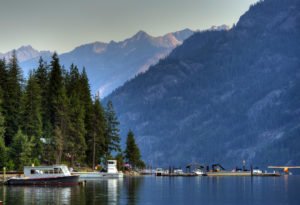
Stehekin Landing, in the Lake Chelan National Recreation Area, is a gateway to the southern unit of North Cascades National Park.
CREDIT: DEBY DIXON/NPS PHOTO
Danner noted that the first ever paid environmental lobbyist in the U.S. got his start pushing for a North Cascades national park. That was Mike McCloskey of Portland, who later became director of the Sierra Club. Other park advocates founded the North Cascades Conservation Council to pursue their cause, a group that is still around today.
Danner wrote in a recently-published park history titled “Crown Jewel Wilderness” about how logging, tourism, bureaucratic and conservation interests were reconciled to create North Cascades National Park.
“What happened in the North Cascades I think was a masterful political compromise,” Danner said. “No one was totally satisfied. People today still want Mount Baker in the park, right? Some people want Stehekin out of the park. But everyone got a little of something of what they wanted. And when you look at a map that is what you see.”
It’s “a complex complex” said current Park Superintendent Karen Taylor-Goodrich.
Taylor-Goodrich said the next 50 years might be dominated by facets of the same issue she’s wrestled with for the past five since she took over as superintendent: adaptation to a warming climate and a changing population.
In an interview, Taylor-Goodrich ticked off melting of the park’s many glaciers, which affects water supply. Plus, there are more wildfires burning more broadly. She may need to bring on seasonal rangers earlier for a longer visitor season, she said. Much of the park is normally snowbound for half the year.
“We have different maintenance challenges with more spring flooding,” Taylor-Goodrich continued. “So we’re having to be more reactive right now as we adapt in a number of different ways.”
Related Stories:
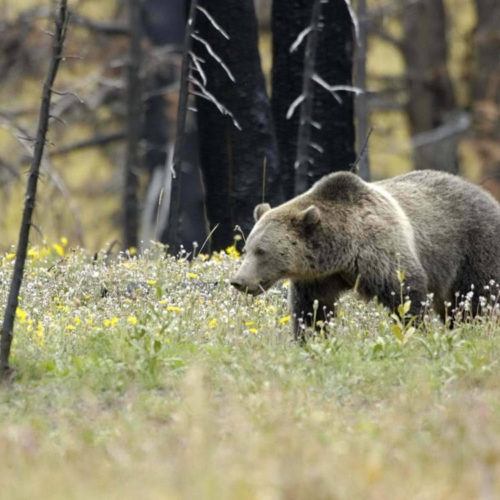
Officials clash over North Cascade grizzly bear reintroduction
A grizzly bear in Yellowstone National Park. (Credit: U.S. Fish and Wildlife Service) Listen (Runtime 1:22) Read In a recent heated committee hearing on Capitol Hill, U.S. Rep. Dan Newhouse,

More grizzlies coming to the North Cascades
Grizzly bear in Yellowstone National Park. (Credit: U.S. Fish and Wildlife Service) Listen (Runtime 0:58) Read Grizzly bears will be brought into Washington’s North Cascades. After more than 30 years
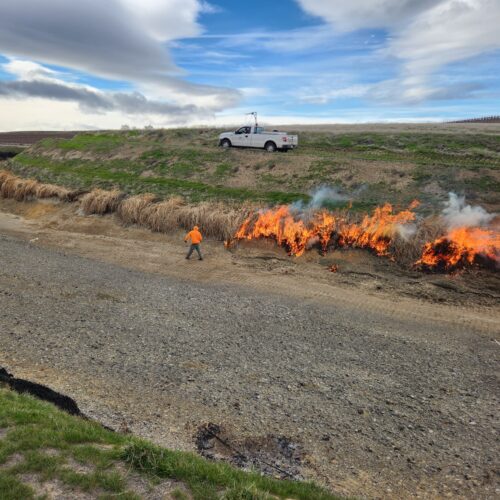
As the Northwest turns toward Spring, agricultural irrigators, fire managers and water experts watch the sky
Workers clear canals of debris in preparation for spring irrigation season in the Roza Irrigation District. (Courtesy: Dave Rollinger) Listen (Runtime 1:00) Read A story in plot points: a federal

